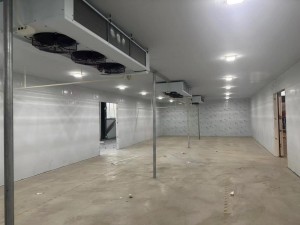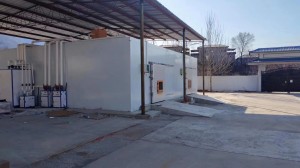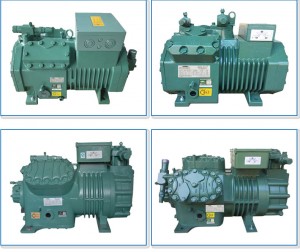크랭크샤프트 파손
대부분의 균열은 저널과 크랭크 암 사이의 전이부에서 발생합니다. 그 이유는 다음과 같습니다. 전이부 반경이 너무 작음, 열처리 시 전이부 반경 가공이 이루어지지 않아 접합부에 응력이 집중됨, 전이부 반경 가공이 불규칙하여 국부적인 단면 변형 발생, 장기간 과부하 운전 및 일부 사용자가 생산량 증가를 위해 임의로 회전 속도를 높여 응력 조건을 악화시킴, 소재 자체에 모래 구멍이나 주물 수축과 같은 결함이 있음, 또한 크랭크 샤프트의 오일 홀에 균열이 발생하여 균열이 발생하는 경우도 있습니다.
1. 크랭크샤프트 품질 불량
크랭크 샤프트가 정품이 아니고 품질이 좋지 않으면 굴삭기의 고속 작동으로 인해 크랭크 샤프트가 쉽게 파손될 수 있습니다.
2. 부적절한 작동
굴삭기 작동 중 스로틀이 너무 크거나 작거나, 변동하거나, 굴삭기가 장시간 고부하로 작동하면 크랭크축이 과도한 힘과 충격으로 인해 손상되어 파손이 발생합니다.
3. 잦은 비상 제동
굴삭기를 작동할 때 클러치 페달을 자주 밟지 않으면 비상 브레이크로 인해 크랭크 샤프트가 파손될 수 있습니다.

4. 메인 베어링이 정렬되지 않았습니다.
크랭크 샤프트를 설치할 때 실린더 블록의 메인 베어링 중심선이 정렬되지 않으면 굴삭기를 시동한 후 베어링이 타거나 샤프트가 붙어 크랭크 샤프트가 파손되기 쉽습니다.
5. 크랭크샤프트 윤활 불량
오일 펌프가 심하게 마모되면 오일 공급이 부족하고 오일 압력이 부족하며 엔진 윤활유 채널이 막히게 되고 크랭크 샤프트와 베어링이 장시간 마찰 상태에 있게 되어 크랭크 샤프트가 파손됩니다.
6. 크랭크샤프트 부품 간 간격이 너무 크다
크랭크샤프트 저널과 베어링 사이의 간격이 너무 크면 굴삭기가 작동한 후 크랭크샤프트가 베어링에 충격을 가해 베어링이 타버리고 크랭크샤프트가 손상될 수 있습니다.
7. 느슨한 플라이휠
플라이휠 볼트가 느슨하면 크랭크 샤프트 부품이 원래 균형을 잃고 굴삭기 작동 중 흔들려 크랭크 샤프트의 꼬리 부분이 쉽게 파손될 수 있습니다.
8. 각 실린더의 불균형 작동
굴삭기의 실린더 중 하나 이상이 작동하지 않거나, 실린더의 균형이 맞지 않거나, 피스톤 커넥팅로드 그룹의 중량 편차가 너무 크면, 힘이 고르지 않아 크랭크축이 파손될 수도 있습니다.
9. 석유 공급 시점이 너무 이르다
연료 공급 시간이 너무 이르면 피스톤이 사점에 도달하기 전에 디젤이 연소되어 크랭크축에 큰 충격과 하중이 가해집니다. 이러한 상태로 장시간 운전하면 크랭크축이 피로해지고 파손될 수 있습니다.
10. 피스톤이 부러져서 강제로 작동하게 됨
출력이 감소하고 실린더에서 이상한 소리가 나는 경우 작업을 계속하십시오. 피스톤이 파손되어 크랭크축의 균형이 깨지거나 변형되거나 쉽게 파손될 가능성이 있습니다.
전화/Whatsapp:+8613367611012
Email:karen@coolerfreezerunit.com
게시 시간: 2024년 7월 24일





